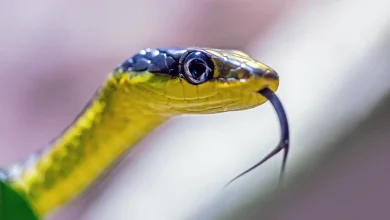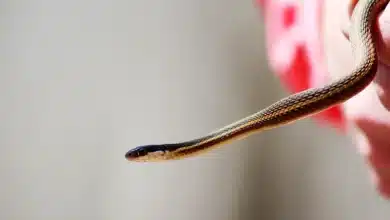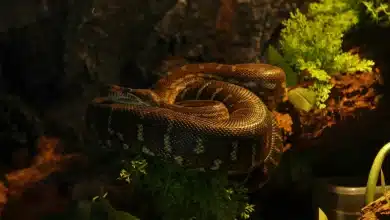Tentacled Water Snake
Erpeton tentaculum (Tentacle Snake, Fishing Snake)
[Page Updated: 28 November 2019]
Thais say: (ngoo kra deng)
Length: average snakes are up to 50-90 cm as adults.
Range: Central and southern Thailand only
Habitat: Tentacled water snakes are found in lakes, rice fields, streams, and other shallow water that is either moving or stagnant – especially that which is murky. It is found in all three types of water environments including salt, fresh, and brackish (combined) water. This snake waits patiently on the bottom and waits for something to wander by – whereupon it seizes it in it’s mouth. Amazingly the tentacled snake can stay underwater for 30 minutes on a breath.
During the dry season in Thailand – from January to April, the Erepton tentaculatus buries its body in mud to stay wet and cool, with its head out of the moud – of course. They do need oxygen to survive.
Active Time? When night is falling it is known to be more active.
Food: Fish. To lure the prey closer to provide the opportunity for a strike these tentacled snakes use their tentacles as lures – like tiny worms. When the fish come closer they strike. When striking their eyes are retracted and they aim for where the fish will be, not where it is. This is an amazing feat. In actuality, the snake is tricking the fish with a movement of its body – into fleeing. But, it knows exactly where it will go when it flees. A very unique snake.
Defensive Behavior: Bites when provoked, but not with normal handling.
Venom Toxicity: Weak venom that is not known to affect humans much. Not deadly. These are not biters, per se, and even when handled they are not known to bite much. The fangs are small, in the rear of the mouth, and the fangs are only partially grooved, not made for injecting large amounts of toxic venom. Their venom works well on fish they eat.
Offspring: Each year this water snake gives birth to a half to a dozen live young which are between 20 and 40 cm in length and about a pencil’s diameter in girth.
Notes: Because it spends it’s life buried in mud, or under the water looking for prey it is a rather difficult snake to catch. Recently on a herping trip in southern Thailand I believe a group of us saw one, but, when we reached in with the tongs to attempt to grab the snake, it had already darted.
These snakes are either lightly striped or have blotches. Their color is either hues of grey or brown.
Tentacled Water Snake Scientific Classification
Kingdom: Animalia
Phylum: Chordata
Class: Reptilia
Order: Squamata
Suborder: Serpentes
Family: Colubridae
Subfamily: Homalopsinae
Genus: Erpeton
Species: E. tentaculatum
Classified as: Erpeton tentaculatum
Classified by, Lacepede in year, 1800.
If you’re looking for Thailand Sea Snake Info Click Here.





Dear Sir
we are doing a lot of research on snakes and are looking for a source of eggs or embryos of the (species removed). On a payment or collaboration basis. We are also interested in embryos of any (removed).
We have published a number of studies already of snake development in top journals such as Nature.
Thanks for any advice you can give.
Prof. Michael Richardson
I don’t participate in anything like this.